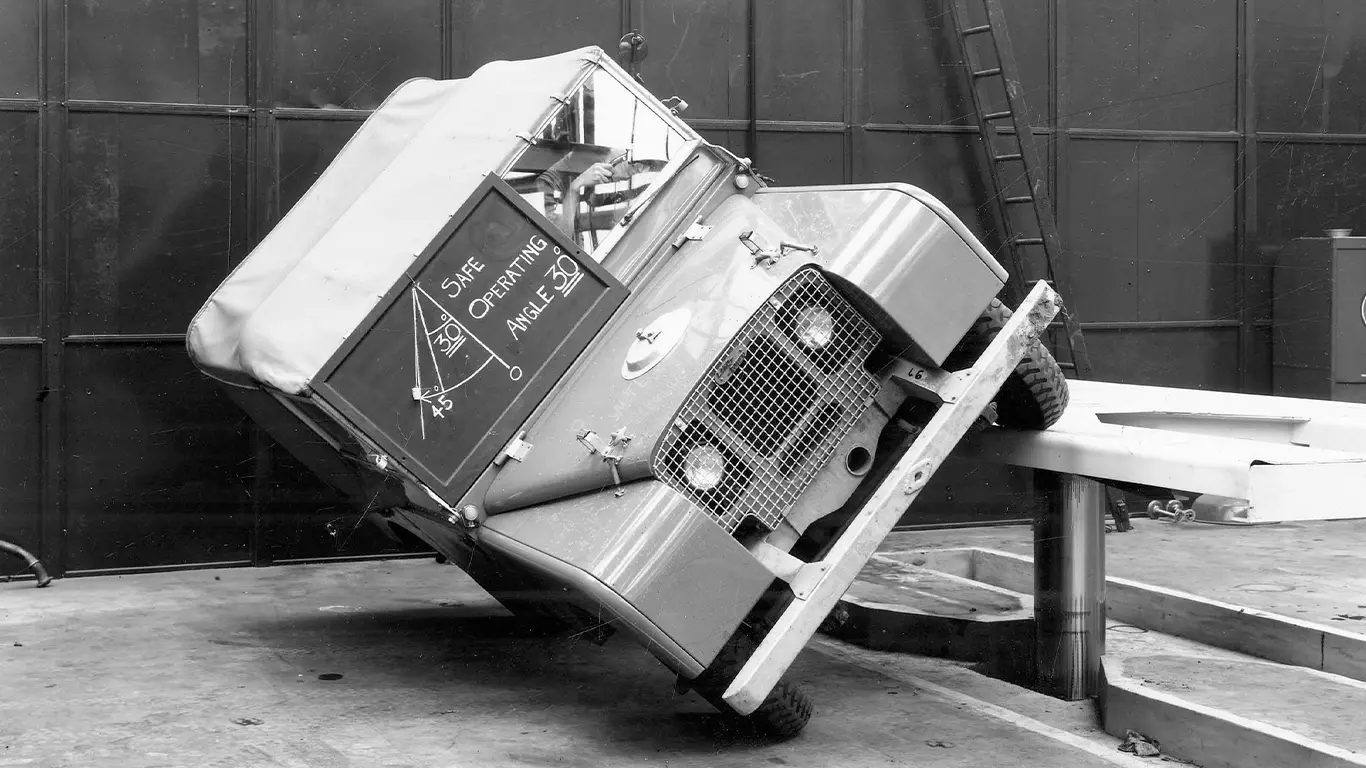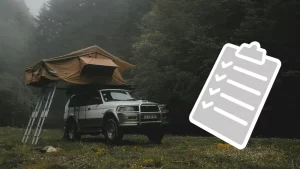Welcome to the 27th instalment of our comprehensive exploration of the exhilarating world of rooftop tents. Throughout this series, we’ve uncovered the many facets that make these elevated accommodations a must-have for the adventurous soul. Today, we take a different road—one that highlights the crucial considerations of driving with a rooftop tent affixed to your vehicle. Strap in as we delve into the nuts and bolts of staying safe and steady on and off the tarmac.
Using Germany as an example, there is no legal regulation stipulating a maximum speed with a roof load. Most manufacturers of rooftop tents, however, recommend a maximum speed of 100 to 130 km/h.
THE HEIGHT OF CAUTION: UNDERSTANDING CLEARANCE
The most immediate change you’ll notice when you mount a rooftop tent is the change in height of your vehicle. While this may seem a minor modification, it can have a dramatic effect on your driving. First and foremost, you must be ever-aware of your vehicle’s new dimensions. Parking garages, low-hanging branches, or drive-through restaurants morph into potential hazards.
To mitigate mishaps, measure the total height of your vehicle with the tent attached immediately after installation. Make a note of this new dimension and perhaps even stick a reminder on your dashboard. Develop a habit of scanning for height clearance signs when entering buildings and closely estimate whether your vehicle will fit through safely.
AERODYNAMICS AND FUEL ECONOMY: THE COST OF CONVENIENCE
Rooftop tents boast an obvious appeal when camp is set up, but they can be less favourable when tallying your petrol expenditures. The tent disrupts your vehicle’s aerodynamics, potentially increasing wind resistance and thus reducing fuel efficiency. This drag not only affects fuel consumption but can also alter your speed and handling, especially on highways.
Consider slowing your average travel speed to accommodate this effect. While it might mean longer time on the road, the trade-off is fewer stops at the petrol station.
Looking at hard-shell, hybrid, and soft-shell variants, it is the latter that is the least aerodynamic of them all.
WEIGHT DISTRIBUTION AND VEHICLE HANDLING: THE BALANCE OF POWER
As discussed in detail in instalment 2/31, do not exceed the static and dynamic roof loads of your vehicle.
Rooftop tents are not permanently attached to the vehicle and can be removed. As such they are considered cargo. Therefore, the vehicle’s permissible gross vehicle weight must also be observed. In Germany, overloading is punishable by a fine of up to 235 euros and one penalty point on your driving license. In other countries, the fines can be even higher. In addition, an overloaded vehicle will often not be allowed to continue its journey until the permissible gross vehicle weight is no longer exceeded.
Fitting a rooftop tent adds weight, and this is not just a matter of loading the boot to capacity. The higher centre of gravity introduced by a rooftop tent can significantly affect your vehicle’s handling, traction, braking, and increase the risk of tipping. Inclines, curves, and sudden manoeuvres now require a nuanced approach.
When packing, distribute gear evenly—keeping heavier items lower inside the vehicle if possible. Practice gentle, gradual steering inputs, and anticipate the need for extended stopping distances. If your itinerary includes varied terrains or off-road elements, recognising your vehicle’s new balance limits is crucial.
WEATHER CONDITIONS: PLAYING DEFENCE AGAINST THE ELEMENTS
One cannot underestimate the influence of weather on your rooftop-tent-equipped drive. Wind can become a more formidable adversary at high speeds. During inclement weather, reducing speed further could enhance safety and improve control.
Before every journey—and regularly while on the road—inspect the mounting points of your rooftop tent. Bolts, straps, and brackets need to be secure, as their displacement can be hazardous at any speed. A little vigilance can prevent a major mishap.
PLANNING YOUR ROUTE: A PATH TO MINIMAL STRESS
Knowing your route and its particular challenges in advance can make a significant difference. Roads with frequent underpasses or narrow lanes should raise flags.
GPS navigation systems are incredibly useful, but don’t solely rely on them, as they might not offer warnings about clearance heights or recommended routes for taller vehicles. Keeping an analogue backup handy, in the form of an up-to-date, detailed road atlas, can be invaluable.
CONCLUSION
As we wrap up this instalment, it’s clear that while there are many aspects to consider when driving with a rooftop tent, they are part of a broader commitment to adventure. With preparation and awareness, your journeys will be as smooth as they are inspiring. Keep exploring the road less travelled, and with each new trip, add another chapter to your story—one elevated in every sense by the rooftop tent that accompanies you.
DISCLAIMER
Please be aware that legislation and regulations concerning rooftop tents and related vehicle modifications can vary significantly from country to country, and even from region to region within a single country. It is essential for readers to familiarise themselves with the local laws and guidelines that apply to their area or any area through which they intend to travel. These include regulations on vehicle height restrictions, road safety requirements, and insurance obligations. Always consult your local transportat authority or legal advisor to ensure compliance with the relevant laws. This article does not constitute legal advice and should be used for informational purposes only.
28/31: Insurance
Photograpy: Land Rover Media







